Arctic and Antarctic Sea Ice Reach Minimum Extent for 2023

Arctic sea ice likely reached its minimum extent for the year at 4.23 million square kilometers (1.63 million square miles) on September 19, 2023, according to scientists at the National Snow and Ice Data Center (NSIDC) at the University of Colorado Boulder.The 2023 minimum is ranked sixth lowest in the nearly 45-year satellite record. The last 17 annual minimum extents are the lowest 17 in the satellite record.NSIDC scientists stress that the Arctic sea ice extent number is preliminary…
Cruise Ship Strikes an Iceberg in Alaska
A Norwegian Cruise Line ship has canceled the remainder of its voyage and will return to Seattle after striking an iceberg off the coast of Alaska on Saturday.The Norwegian Sun was transitioning to Hubbard Glacier in Alaska when the ship made contact with a small iceberg. No injuries were reported. The 78,309 GT ship was "engulfed by dense fog, limiting visibility and resulting in the ship making contact with a growler", a Norwegian Cruise Line spokesperson told Cruise Hive.A growler is an iceberg less than 6.6 feet across that floats with less than 3.3 feet showing above water, according to the National Snow and Ice Data Center.Following the incident, the 848-foot ship diverted to Juneau, Alaska, for further assessment.
The Arctic: Scientists Aim to Improve Sea Ice Predictions' Accuracy, Access

Sea ice predictions have improved markedly since the founding of an international forecasting and monitoring network 14 years ago.“These forecasts are quite encouraging in their increasing accuracy,” said Uma Bhatt, an atmospheric sciences professor at the University of Alaska Fairbanks Geophysical Institute. Bhatt spoke about the Sea Ice Prediction Network at the American Geophysical Union’s annual meeting last month.As the amount of sea ice in the Arctic declines, thins and becomes more mobile…
UAF’s GINA Provides a Guiding Hand in Arctic Ocean Research
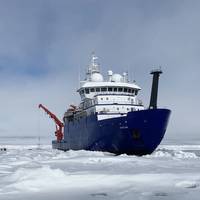
The research vessel Sikuliaq navigated among and around the chunks and slabs of Arctic sea ice above Alaska for several weeks on two voyages this fall, breaking through frozen slabs when it had to, just as its sturdy hull is designed to do. It's now on a third trip.The Sikuliaq, a 261-ft. ice-capable research vessel operated by UAF, pauses in the Arctic Ocean in June 2021 during its fifth year of operation. A few months later, it traveled farther north than ever before — almost 500 miles beyond Point Barrow.Satellite imagery produced at the Geographic Information Network of Alaska…
Arctic Shipping Requires New Ways to Manage Risks

In February 2021, LNG carrier Christophe de Margerie, escorted by a nuclear icebreaker, became the first large-capacity cargo vessel to transit the eastern sector of the Northern Sea Route (NSR). The voyage demonstrated that year-round safe navigation is possible along the entire length of the Northern Sea Route (NSR).In the last five years, cargo traffic along the NSR has grown almost fivefold, reaching 33 million tons in 2020. Last year, there were 64 voyages on the NSR compared with 37 in 2019.
Arctic Sea Ice Lows Mark a New Polar Climate Regime
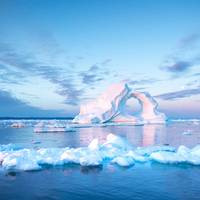
At the edge of the ice blanketing part of the Arctic Ocean, the ice looked sickly. Where thick sheets of ice once sat atop the water, now a layer of soft, spongey slush slid and bobbed atop the waves.From the deck of a research ship under a bright, clear sky, “ice pilot” Paul Ruzycki mused over how quickly the region was changing since he began helping ships spot and navigate between icebergs in 1996.“Not so long ago, I heard that we had 100 years before the Arctic would be ice free in the summer,” he said. “Then I heard 75 years, 25 years, and just recently I heard 15 years.
Winter Sea Ice in Bering Sea Reached Lowest Levels in Millennia
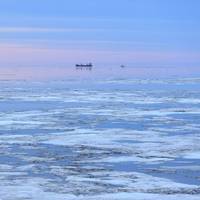
The Bering Sea ice cover during the winters of 2018 and 2019 hit new lows not seen in thousands of years, scientists reported on Wednesday, adding to concerns about the accelerating impact of climate change in the Arctic.Satellite data provides a clear picture of how sea ice has changed over the last four decades in the region between the Arctic and northern Pacific oceans. Beyond that, the only ice records available were those recorded in ship logs and other observations.So scientists turned to peat land, which holds organic compounds from plants dating back millennia, on the remote St.
Near Record Low Arctic Ocean Ice a Boost for Shipping

Winter sea ice on the Arctic Ocean covered the second smallest area on record this year, part of a thaw that is opening the region to shipping and oil exploration and may be disrupting weather far to the south, scientists said on Friday. The extent of floating ice likely reached an annual maximum of 14.5 million square kilometers (5.6 million square miles) on March 17, fractionally bigger than a record set in 2017, the U.S. National Snow and Ice Data Center (NSIDC) said. Sea ice around the North Pole freezes to its biggest at the end of the winter in March…
Ice-Free Arctic?
At the current rate of carbon emissions of about 35 to 40 gigatons a year, scientists are estimating that the Arctic could become ice-free within the next 20 years, Suptnik reported quoting National Snow and Ice Data Center (NSIDC) in Boulder. Julienne Stroeve, a climate scientist at NSIDC in Boulder, Colorado, warned of rising oceans, and foul weather from Polar melt, the report said. The changes are the largest in the summertime, but they are actually happening during all months of the year. "I think the key things we really need to understand is, first, the natural climate variability and, second, changes caused by increased human activity," she quoted as saying. She warned if the Arctic ice melts away this would result in a seven-meter increase in the sea levels worldwide.
Arctic Ice Sets New Record Low for Winter
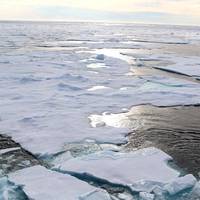
The extent of sea ice in the Arctic Ocean has set a new record low for the wintertime in a region strongly affected by long-term trends of global warming, U.S. and European scientists said on Wednesday. Sea ice around the North Pole expands to its biggest extent of the year in February or March after a deep freeze in the winter polar darkness and shrinks to the smallest of the year in September, at the end of the brief Arctic summer. Arctic sea ice appears to have reached its annual maximum extent on March 7…
The Big Melt in World Ocean Ice Record
Sea ice extent in both the northern and southern hemisphere was at record low levels for the month of January 2017. Last month set a record for the lowest sea-ice extent for the month, falling below the record set last year, according to the National Snow and Ice Data Center (NSIDC), a Colorado-based research outfit. Arctic sea ice this January averaged 5.17 million square miles, the lowest for the month in the 38-year sea ice record. "Greenhouse gases emitted through human activities and the resulting increase in global mean temperatures are the most likely underlying cause of the sea ice decline," the snow and ice data center said. Sea ice extent was also tracking at record low levels for the month of January in the Antarctic, which is currently still in summer.
Arctic Discovery Shocks Scientists
A report from the Washington Post described how high Arctic temperatures had risen by about 36 degrees Fahrenheit last month, coinciding with record-low sea ice levels. Scientists have just discovered something int he Arctic that could totally change how they see the drastically changing temperatures in the region. This was a disturbing trend, as sea ice normally expands at this time of the year. But with a buoy recently reporting temperatures at the North Pole close to the freezing point of 32 degrees Fahrenheit, talk of an Arctic heatwave has experts concerned about the impact of climate change on the area. Climate change may be rearing its ugly head again in the North Pole, as an Arctic heatwave has caused temperatures to rise tens of degrees Fahrenheit warmer than average.
Polar Sea Ice the Size of India Vanishes in Record Heat
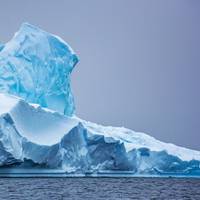
Sea ice off Antarctica and in the Arctic is at record lows for this time of year after declining by twice the size of Alaska in a sign of rising global temperatures, climate scientists say. Against a trend of global warming and a steady retreat of ice at earth's northern tip, ice floating on the Southern Ocean off Antarctica has tended to expand in recent years. But now it is shrinking at both ends of the planet, a development alarming scientists and to which a build-up of man-made greenhouse gases…
Will Naval Operations Heat up in the Arctic?
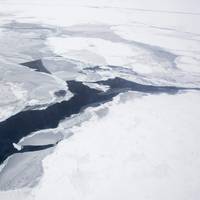
As diminishing sea ice in the Arctic Ocean expands navigable waters, scientists sponsored by the Office of Naval Research have traveled to the region to study the changing environment and provide new tools to help the U.S. Navy operate in a once-inaccessible area. "This changing environment is opening the Arctic for expanded maritime and naval activity," said Rear Adm. Mat Winter, chief of naval research. A recent announcement from the National Snow and Ice Data Center revealed…
Arctic Sea Ice Melt Continues
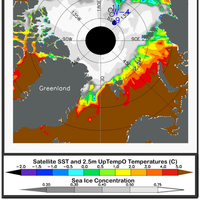
As of August 14, Arctic sea ice extent is tracking third lowest in the satellite record, according to the National Snow & Ice Data Center (NSIDC). The southern route through the Northwest Passage appears to be largely free of ice. Despite a rather diffuse ice cover in the Chukchi Sea, it is unlikely that Arctic sea ice extent this September will fall below the record minimum set in 2012. As of August 14, Arctic sea ice extent was 5.61 million square kilometers, the third lowest extent in the satellite record for this date and slightly below the two standard deviation range.
Arctic Sea Ice Melt at Higher Level
Sea ice is decreasing in the Arctic but year-to-year variability in sea ice extent is large. Ice extent is influenced by atmospheric circulation, with temperatures dictating ice melt, and winds shifting the ice, reports the Nature. According to National Snow and Ice Data Center, through the first half of July, Arctic sea ice extent continued tracking close to levels in 2012, the summer that ended with the lowest September extent in the satellite record. The stormy weather pattern that characterized June has persisted into July. Nevertheless, sea ice melt began earlier than average over most of the Arctic Ocean. As of July 18, Arctic sea ice extent was 7.82 million square kilometers (3.02 million square miles).
Arctic Sea Ice Sheds Weight in May
Arctic sea ice hit a record low in May 2016 as scientists discovered the first-ever link between melting ice in Greenland and a phenomenon known to warm the area faster than the rest of the Northern Hemisphere. According to the National Snow and Ice Data Center (NSIDC) in Boulder, Colorado, sea ice extent across the Arctic was 4.63 million square miles, which was an astonishing 224,000 square miles below the previous record low for the month of May, set in 2004. Data published by the US National Snow and Ice Data Centre (NSIDC) this week showed average sea ice extent for last month was more than 500,000 sq km (193,000 sq miles) smaller than May 2012. "We just didn't break the old May record, we're way below the previous one," Mark Serreze, the center's director said.
Arctic Could Be Ice-Free for First Time in 100000 Years
For the first time in 100,000 years the chilling landscape of Arctic known for its snow-capped mountains and polar bears may be without its sea ice either this year or the next. Cambridge University Professor Peter Wadhams has made headlines this weekend, telling The Independent that the Arctic could become ice-free “this year or next,” says a report in Atlas Obscura. While the extreme prediction has drawn skepticism from other climate scientists, Wadhams’ warning does draw attention to a situation that many monitoring Arctic sea ice find alarming. He based his prediction on projected data from the US National Snow and Ice Data Center showing that on 1 June this year there were estimated to be 11.1 million square kilometers of sea ice.
Arctic Sea Ice Hits a Record Low
Scientists at the National Snow and Ice Data Center (NSIDC) said that the sea ice cover attained an average maximum extent of 14.52m sq km (5.607m sq miles) on 24 March, the lowest winter maximum since records began in 1979. The low beats a record set only last year of 14.54m sq km (5.612m sq miles), reached on 25 February 2015. Scientists say the region experienced "a warm, crazy winter", saying it's part of a long-term trend. This year's ice didn't break the record by much, but it's "an exclamation point" on a longer-term trend, said Nasa scientist Walt Meier, who helped calculate the data. To put the record low into perspective, consider that this was 431…
The Economic Cost of a Warming Arctic: $43 trillion
Greenhouse gas emissions from thawing Arctic permafrost could result in an additional $43 trillion in economic impacts by the end of the twenty-second century, according to a new study by researchers from the University of Cambridge and the U.S. National Snow and Ice Data Center (NSIDC). This represents a 13 per cent increase on the predicted economic impact of climate change by 2200, up from $326tn to $369tn. The researchers point out that the Arctic is one of the fastest warming regions on the planet and the permanent ice on land and under the seabed prevents billions of tonnes of greenhouse gases from being released into the atmosphere to exacerbate the greenhouse effect.
Arctic Permafrost and Climate Gains
Carbon-rich Arctic soils are thawing, and that has the potential to undermine global climate policies, The Washington Post reports. Permafrost is basically soil that stays frozen all year long. Because it never melts, it holds thousands of years’ worth of dead plants and their carbon. About 24 percent of land in the Northern Hemisphere is covered with the stuff. Northern permafrost—ground frozen year-round—may contain more than twice as much carbon as there is in the atmosphere. And at least some of it could already be escaping to the atmosphere—as carbon dioxide or methane—as the Arctic warms. According to the National Academy of Sciences…
Arctic Sea Ice Sets Record Low Extent at Winter Maximum
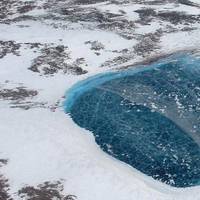
Arctic sea ice has set a new winter record by freezing over the smallest extent since satellite records began in 1979, in a new sign of long-term climate change, U.S. data showed on Thursday. The ice floating on the Arctic Ocean around the North Pole reached its maximum annual extent of just 14.54 million square kms (5.61 million sq miles) on Feb. 25 - slightly bigger than Canada - and is now expected to shrink with a spring thaw. "This year's maximum ice extent was the lowest in the satellite record…
Bering Sea Early Sea Ice Break-Up 2014
The National Snow & Ice Data Center informs that since reaching its annual maximum extent on March 21, Arctic sea ice extent has declined somewhat unevenly, but has consistently been well below its average 1981 to 2010 extent. While the rate of Arctic-wide retreat was rapid through the first half of April, it has subsequently slowed down. However, ice breakup was quite early in the Bering Sea, presenting difficulties for gold dredging operations and seal hunters in the region. In the Antarctic, sea ice continued to reach record high extents. Average ice extent for April 2014 was the fifth lowest for the month in the satellite record. Through 2014, the linear rate of decline for April ice extent is -2.4% per decade relative to the 1981 to 2010 average.






